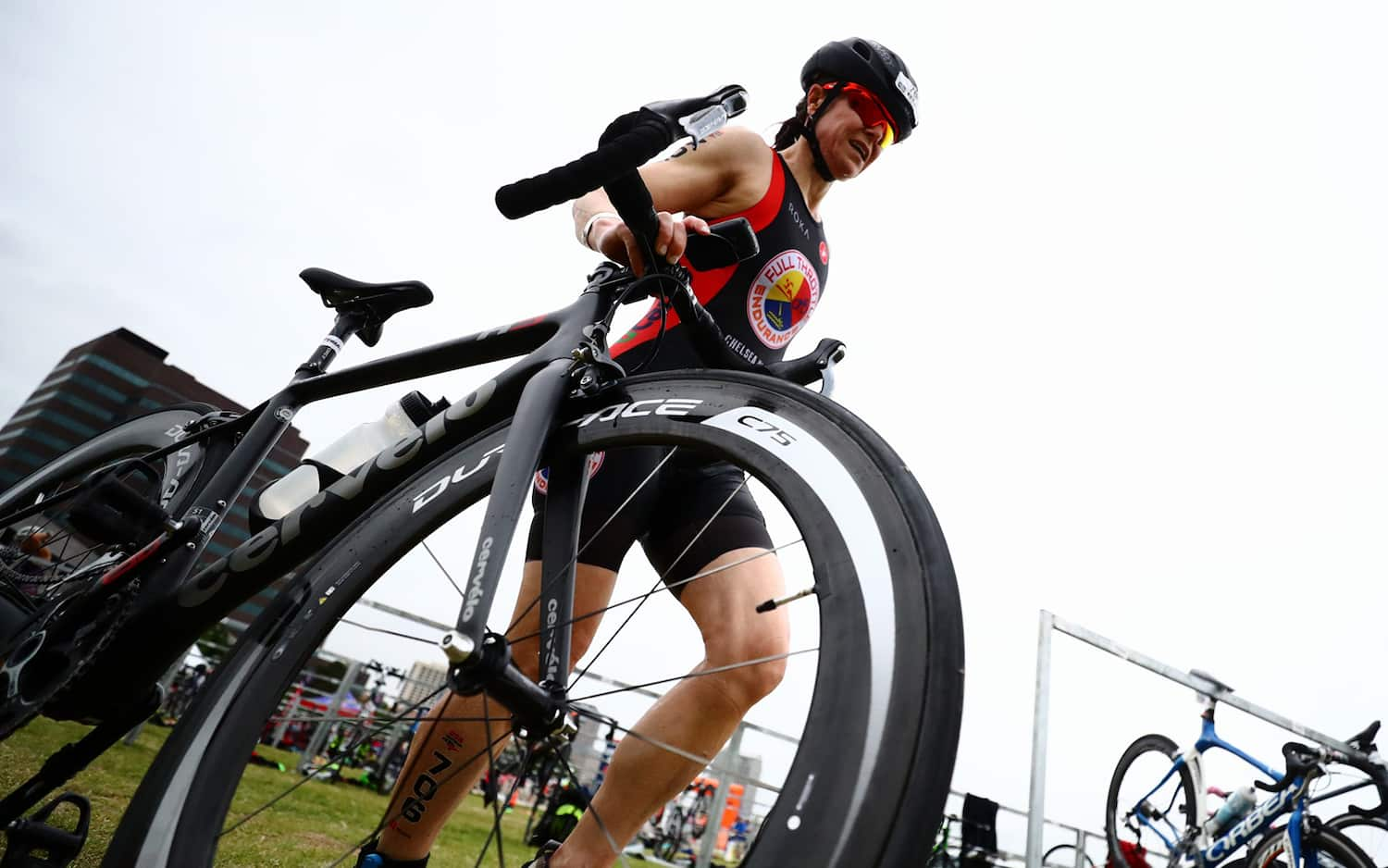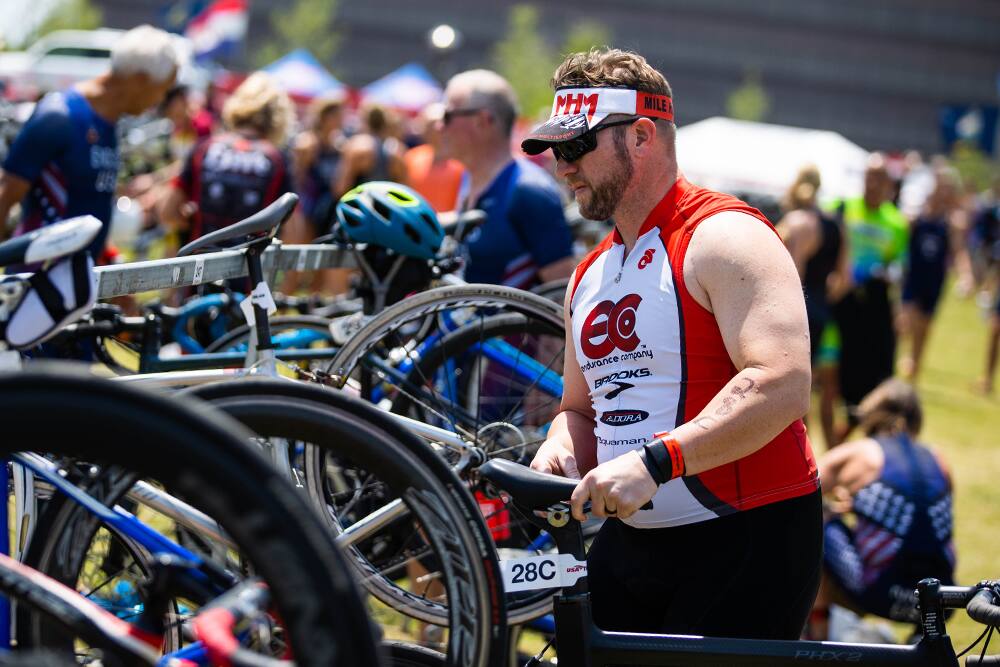
Warming Up with Early Season Races
by Marty Gaal

Your first race of the season shouldn’t be your goal race for the season. Not to say that you shouldn’t be prepared for it, but you should use your first race of the year as hard practice toward a later goal.
How much time you need to prepare for this event depends on a few things: What sort of shape did you keep from your previous season? Are you coming off a long period of little-to-no training? What distance is the event? Regardless, at least eight weeks is a good minimum to get ready.
I recommend athletes do a sprint or an Olympic-distance prior to a goal 70.3 or Ironman so they have at least one race rehearsal under their belt. This allows you to make and resolve mistakes without having to suffer the consequences during a longer event.
Your preparation for this tune-up race will vary with your ultimate goals, but at a minimum, you should be reasonably confident in your ability to complete each leg of the race, have a good idea of your nutrition and pacing plans for the race, and do a thorough check of your equipment prior to the race. Showing up with balding tires or whimsical shifting is not ideal!
For example, if you’re planning an Olympic-distance race in mid-April and a 70.3 in May or June, you should be comfortable riding 30-40 miles, running at least 7-8 miles, and swimming one mile in separate sessions by the end of March. The distance of the Olympic race shouldn’t be intimidating, it’s just putting everything together and racing with the proper intensity that may be. Ideally, you will have completed a handful of brick (bike-run) workouts and spent time at goal-70.3 intensity if not higher before your tune-up race.
Try taking this Olympic-distance race at goal race intensity, which would be in the 75-85% range of FTP for the bike (heart rate Zone 2-3) depending on fitness. This way, you’re actively working towards your ultimate goal and can see how your nutrition and pacing work. A more aggressive approach more suitable to experienced athletes would be to race closer to lactate threshold, or 85-95% FTP (HR Zone 3-4). The most aggressive approach would be to just go as hard as you can as long as you can, and see what happens (This is a real strategy that works for super fit athletes)!

Whatever your approach, it’s good to plan a light week of training going into this event so you can get a solid idea of where you’re at. Racing at any level on tired legs and depleted reserves makes everything harder, and you’re less likely to get a realistic preview of your goal race ability.
Your expectations from this race should be in line with your preparation. If you’re coming off a long period of little exercise, then finishing should make you happy. Even the shortest sprint triathlon is a tough event requiring endurance and internal fortitude.
You should be reasonably confident in your ability to complete each leg of the race, have a good idea of your nutrition and pacing plans for the race, and do a thorough check of your equipment prior to the race.
If you’ve been hammering with the A group all winter, then you’re entitled to have higher goals. Beyond working out the kinks of transitions and nutrition, you may target a podium spot or a particular FTP/HR value, a particular pace, or an overall goal time. Meeting goal times is especially relevant if the race is on a course you’ve completed before. Conditions will always vary, but you can allow for that.
One of my highest achieving athletes would race against himself from years past. By tracking times in this way, he could see the real world results of the work he put in season after season. Tom 2022 really beat the heck out of Tom 2018!
A checklist of first-race goals could be:
- Smooth swim (especially for nervous swimmers) - stay relaxed, find your own rhythm, stay confident.
- Efficient transitions - You don’t have to be the fastest, but the goal here is to get in and get out. Have a plan and walk through prior to the race start. Re: “This is where I come in from the swim, my rack is the fourth on the right. Shoes, helmet, glasses, grab bike and exit at the other end. Don’t mount until the mount line.”
- Thoughtful hydration and nutrition - Have a schedule. Drink a few ounces at least every 20 minutes, and for events lasting longer than an hour, you should be consuming calories via gels, blocks, additives to your drink, or what works for you.
- Steady biking - Riding a triathlon bike leg like a road race only works if it’s a sprint or draft-legal race or you’re a super strong rider. Steady power is the way to go. Watch your variability.
- Comfortable running - Focus on good form, turnover and a relaxed upper body. The effort and pace should take care of themselves if you do.
- Stay in the moment - Engage in your race. You can analyze as you progress. Recognize how you’re feeling and adjust as need be. You’re not beholden to the exact plan you wrote down. Newer athletes in particular need to learn this.
The first race should also be fun. It should be a low-stakes affair where you can afford to make mistakes or try new strategies. You should walk away with a realistic assessment of your fitness and a good idea of what you can achieve at your upcoming goal event.